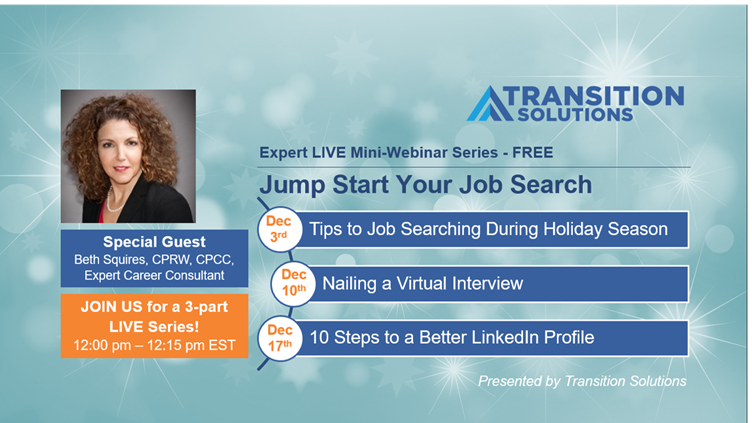
By: Transition Solutions
As a leader in HR have you leveraged data analytics more during the pandemic?
During these times of uncertainty and disruption, many HR leaders have turned to analytics more than ever to help navigate workforce changes. At Transition Solutions, we’ve been helping companies and individuals manage difficult employee transitions for 30 years.
Hyperight recently shared that in order to be successful in managing remote talent, HR departments had a short amount of time to put aside gut-feelings and make room for bold data-driven decision making and innovative thinking. They offered the four key areas below where data analytics are helping companies make informed decisions during the pandemic.
1. Managing remote work. As it became a requirement for employees to work from home due to nationwide lockdowns, HR functions were faced with the challenge of making sure targets were being met while maintaining a high level of morale in the remote working environment. In the remote working space, people analytics teams are dedicated to supporting employees, allocating resources and focus, measuring impact and planning ahead with the help of HR data. But at the same time, HR functions use people analytics to measure productivity, collaboration and burnout by capturing data across the business in order to monitor employee wellbeing and the impact of remote work.
2. Finding and hiring talent. Unfortunately, the COVID-19 crisis brought on massive layoffs in many sectors and thrust us in probably the worst economic crisis since the Great Depression. In addition, McKinsey reports that 67% of surveyed 190 chief officers and functional leaders across industries say they anticipate spending less on permanent hiring in the next 12 months. Still, making smart and strategic hires requires having clear recruitment insight and tracking important HR analytics metrics to make the right decisions. Some of the metrics HR practitioners should track are time to hire, cost per hire, reduce time to hire, early turnover, sourcing channel effectiveness, visitor to applicant conversion rate, quality of hire, revenue per employee, etc.
3. Monitoring and rewarding performance. Another aspect of work that is affected by the current COVID-19 crisis is reward and performance plans. McKinsey highlights that people who are working remotely are even more reliant on performance management to tell them how they are doing. Implementing strategic people and workforce analytics can not only optimize salaries and rewards, but it can also help HR positively impact the bottom line of the company while providing fair wages. Adding to this is the CEB Analytics study stating that companies that are successfully working with HR analytics can improve talent outcomes by nine percentage points, leading to a 4% improvement in gross profit margin and $12.8 million in savings for every $1 billion in revenue.
4. Prioritizing and gaining intelligence. One of the most critical, but also most challenging parts of risk and crisis management is prioritization. In a turbulent period like this, HR has a myriad of fires to put out, so it can be hard to define clear targets where to deploy resources. People data helps to gain essential insights for decision making such as having demographic and location data required to identify high-risk employees. In order to make smart decisions in a short period of time, business leaders need to have an understanding of recent pandemic developments and integrate public health dashboards into people analytics systems.
HR Director, Walker Sands shared with HR Daily Advisor and summarized below how he leverages data to make informed decisions.
“I think the secret is having great leadership who finds that as important as I do. I’ve seen companies that feel like turnover is just the nature of the beast and that there’s really nothing that can be done about it. To an extent, that’s true. But there’s a lot that’s controllable. I try to understand the reason people leave. I approach it from two directions. I think HR analytics data help a lot. But a lot of understanding why people leave comes from just regular, people-to-people conversations. I also look at how people are doing on the engagement surveys and what people are saying on our exit surveys to understand the problem.”
HR leaders like Sands are leveraging data to measure performance, productivity and wellbeing as we all work through one of the most challenging periods our generation has had to face.
If you are facing a workforce reduction, Transition Solutions is here to help you develop a plan, manage the change and assist your impacted employees. We have developed a robust personalized and customized approach to every situation and our strong reputation for consistently delivering exceptional service at value sets us apart.
Know someone in the market for a new job? In the spirit of the upcoming season of giving, we are hosting FREE mini-webinars for individuals looking for their next role. Each webinar will be live 15 minute instruction from an expert career coach!
- Nailing a Virtual Interview (December 10th)
- 10 Steps to a Better LinkedIn Profile (December 17th)
If you would like more information on the upcoming webinars or our services please check out our website at https://www.transitionsolutions.com or you can contact us directly at 888-424-0003 or email us at info@transitionsolutions.com .

